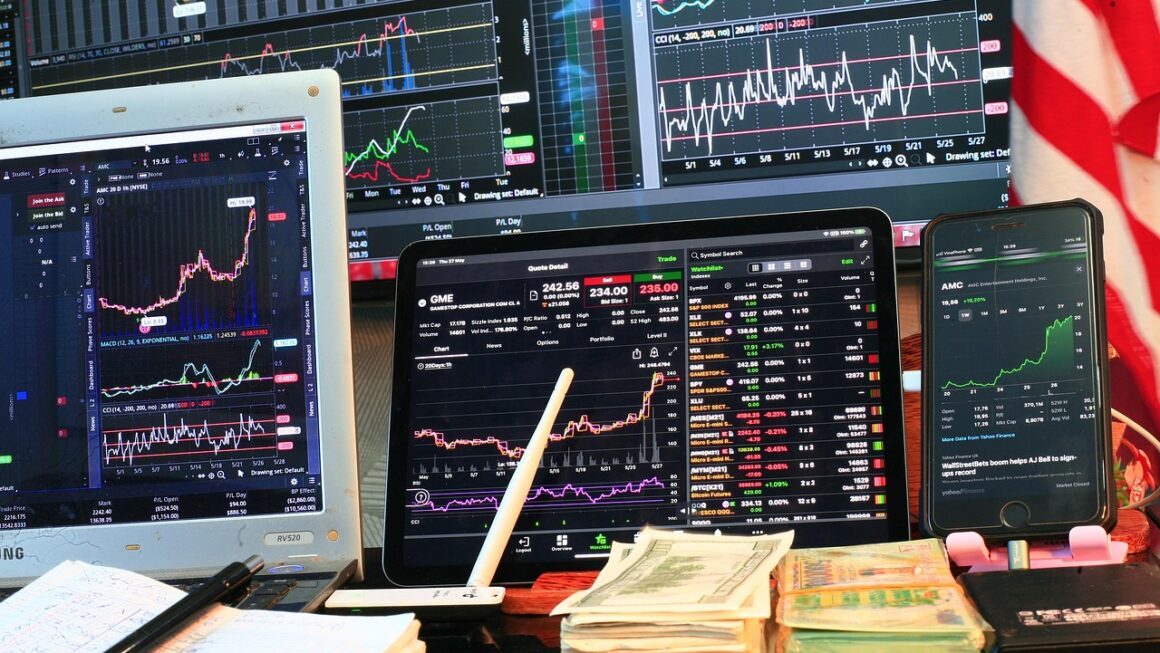Leverage trading. The term conjures images of seasoned investors making huge gains with minimal capital. But it’s far more than just a get-rich-quick scheme. Leverage, when used responsibly and with a thorough understanding, can be a powerful tool for expanding your trading potential. However, it’s equally important to recognize its inherent risks, as it can magnify losses just as easily as profits. This post will delve into the intricacies of leverage trading, exploring its mechanisms, benefits, risks, and best practices for mitigating potential downsides.
Understanding Leverage Trading
What is Leverage?
Leverage is essentially borrowing capital to increase your potential return on investment. It allows you to control a larger position in an asset than you could with your own available funds. Brokers offer leverage, expressed as a ratio, such as 1:10, 1:50, or even 1:100. This ratio signifies how much borrowed capital you can access for every dollar of your own capital.
- Example: If you have $1,000 and your broker offers leverage of 1:50, you can control a position worth $50,000 ($1,000 x 50).
How Leverage Works
When you use leverage, you’re essentially putting up a small percentage of the total trade value, known as the “margin.” This margin serves as collateral for the borrowed funds. Your profit or loss is then calculated based on the entire position size, not just your initial margin.
- Example: Using the previous example, if your $50,000 position increases in value by 1%, your profit is $500. This represents a 50% return on your initial $1,000 investment. However, if the position decreases by 1%, you lose $500, which is 50% of your initial investment.
Common Instruments Offering Leverage
Leverage is prevalent in various financial instruments, including:
- Forex (Foreign Exchange): Known for high leverage ratios.
- CFDs (Contracts for Difference): Allow trading on the price movements of assets without owning them.
- Futures: Contracts to buy or sell an asset at a predetermined price and date.
- Options: Contracts that give the buyer the right, but not the obligation, to buy or sell an asset at a specified price within a specific period.
- Margin Accounts for Stocks: Allow borrowing money from your broker to purchase stocks.
Benefits of Leverage Trading
Amplified Profits
The most obvious benefit of leverage is the potential to amplify profits. Even small price movements can lead to substantial returns on your initial investment.
- Example: A 0.5% gain on a $10,000 position might yield only $50. However, with 1:20 leverage, that $10,000 position becomes $200,000, and the same 0.5% gain translates to a $1,000 profit.
Increased Capital Efficiency
Leverage allows you to control larger positions with less capital, freeing up funds for other investments or opportunities. This can be particularly beneficial for diversifying your portfolio.
- You can use leverage to take positions in multiple markets simultaneously without tying up all your capital in one trade.
- Leverage can free up capital for other investment opportunities.
Access to Markets with High Minimums
Some markets, like futures, require significant capital to trade directly. Leverage allows individuals with smaller accounts to participate in these markets.
Hedging Strategies
Leverage can be used in sophisticated hedging strategies to mitigate risk in existing portfolios.
- By taking a leveraged position in an asset that is negatively correlated with your existing investments, you can offset potential losses.
Risks of Leverage Trading
Magnified Losses
Just as leverage amplifies profits, it also magnifies losses. A losing trade can quickly deplete your account, potentially exceeding your initial investment. This is perhaps the biggest and most important risk to understand.
- Example: If your $10,000 position (with 1:20 leverage) drops by 5%, you lose $10,000. This wipes out your entire initial investment.
Margin Calls
If your losses erode your margin to a certain level, your broker may issue a “margin call,” requiring you to deposit additional funds to maintain your position. Failure to meet the margin call can result in the forced liquidation of your position, potentially at a significant loss.
- Margin calls are designed to protect the broker, but they can be devastating to traders who are not prepared for them.
- Always have a plan in place to address potential margin calls.
Interest Charges and Fees
Leverage isn’t free. Brokers charge interest on the borrowed funds, which can eat into your profits. There may also be other fees associated with leveraged trading, such as overnight funding fees.
- Factor in interest and fees when calculating the potential profitability of a leveraged trade.
Emotional Trading
The high stakes associated with leverage can lead to emotional decision-making, such as chasing losses or deviating from your trading plan.
- It is crucial to maintain discipline and stick to your predetermined risk management strategy, even when emotions are running high.
Strategies for Managing Risk with Leverage
Use Stop-Loss Orders
Always use stop-loss orders to limit your potential losses. A stop-loss order automatically closes your position when the price reaches a specified level.
- Example: If you’re long on an asset at $100, you might set a stop-loss order at $98, limiting your potential loss to $2 per share.
Start with Low Leverage Ratios
Begin with lower leverage ratios until you gain experience and confidence. Gradually increase your leverage as you become more comfortable with the risks.
- New traders should consider starting with leverage of 1:2 or 1:5 before moving to higher ratios.
Diversify Your Portfolio
Don’t put all your eggs in one basket. Diversify your portfolio across different asset classes and markets to reduce your overall risk exposure.
Understand Market Volatility
Be aware of market volatility and adjust your leverage accordingly. Higher volatility requires lower leverage.
- During periods of high market volatility, it is prudent to reduce your leverage to mitigate the risk of sudden price swings.
Only Risk What You Can Afford to Lose
Never trade with money you can’t afford to lose. Leverage trading is inherently risky, and you should be prepared to accept the possibility of losing your entire investment.
- Treat leverage trading as a high-risk, high-reward activity and only allocate a portion of your portfolio to it.
Conclusion
Leverage trading can be a powerful tool for increasing your trading potential, but it’s crucial to understand the risks involved. By practicing responsible risk management, starting with low leverage ratios, and continuously educating yourself, you can navigate the complexities of leverage trading and potentially achieve your financial goals. However, always remember that leverage amplifies both gains and losses, and a sound understanding of its mechanics and inherent risks is paramount before engaging in any leveraged trading activities.




